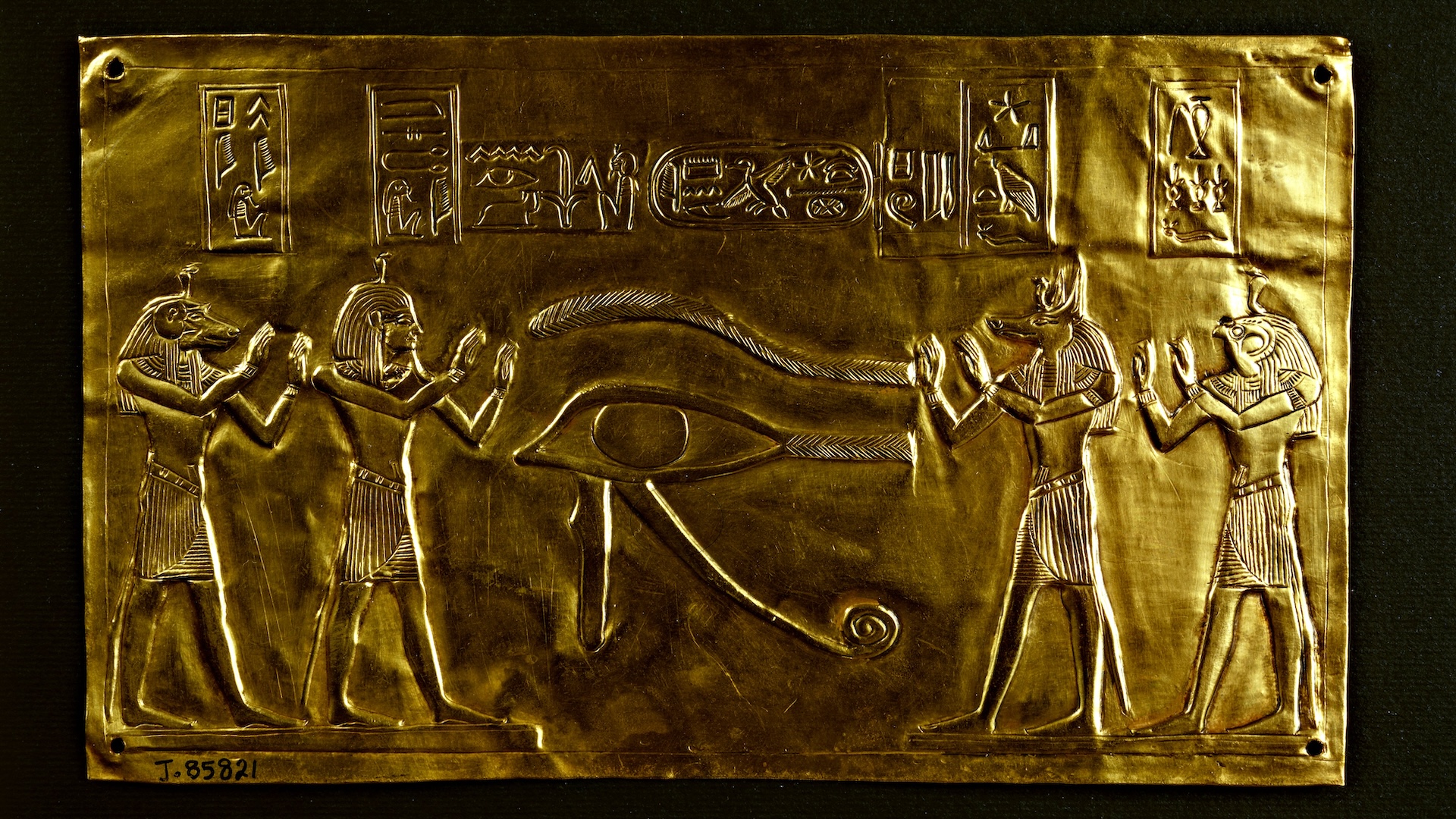
The “Eye of Horus,” a depiction of a single stylized eye looking straight ahead, is found throughout ancient Egypt. The symbol is frequently seen in ancient burials — especially on a type of amulet known as the wedjat (or udjat). Sometimes, the Eye of Horus is also featured on coffins and inside tomb chapels.
But what is the Eye of Horus and what did it mean to the ancient Egyptians?
According to Egyptian mythology, Horus was the son of Osiris, the god of the underworld. Horus fought his uncle Seth to see who would be ruler of Egypt. During the fight, Seth mutilated the left eye of Horus. But Horus ultimately won the fight, became ruler of Egypt and, eventually, regained his left eye. It was restored “by the ibis-headed Thoth, the god of wisdom,” Emily Teeter, a research associate at the Polish Centre of Mediterranean Archaeology, told Live Science in an email.
Depictions of this left eye became the powerful Eye of Horus symbol.
“The wedjat is one of the most iconic amulets from ancient Egypt,” Kei Yamamoto, an Egyptologist at the University of Toronto, told Live Science in an email. “The wedjat amulet is associated with healing and protection. That is probably why this type of amulet is found in many burials, often included in the mummy wrappings.”
Related: How many ancient Egyptian pyramids are there?
The ancient Egyptian civilization lasted more than 3,000 years, and practices surrounding the Eye of Horus changed over time.
“In later periods, a large wedjat made of wax was placed over the left abdomen, where the embalmer made the incision during the mummification process, in order to invoke healing and protection of the vulnerable area,” Yamamoto said. This was done during the first millennium B.C.
The eye was such an “instantly recognisable” sign of protection and health that it “became a metaphor for pragmatic ‘wholeness’ and well-being,” Penny Wilson, an associate professor of archaeology at Durham University in the U.K., told Live Science in an email.
The Eye of Horus’ associations with well-being “could be applied to a range of other concepts about the Nile waters, Egypt as a whole, healing and whole-food offerings,” Wilson said.
The Eye of Horus was also associated with the waxing and waning of the moon, which may have helped increase its appeal, said Gyula Priskin, an ancient historian at the University of Szeged in Hungary. The story of the left eye of Horus being mutilated and restored was compared to how the moon waxes and wanes, especially during the second and first millenniums B.C.
“Although the Eye of Horus was a complex symbol with many connotations and appearing in many roles, its association with the moon very probably contributed to its popularity,” Priskin told Live Science in an email.
When did the Eye of Horus first appear?
Wedjat amulets first appeared around 2200 B.C. and the Eye of Horus was also drawn on coffins and tomb chapels around that time, Yamamoto said. “In those cases, scholars believe that the eyes not only provided magical protection for the deceased but also allowed them to look out toward the world of the living.”
It’s not clear why the Eye of Horus emerged around the time of the sixth dynasty. Yamamoto noted that at that time, ancient Egyptians started writing a series of religious texts on the walls of pyramids. This suggests that ancient Egyptians were starting to “canonize” their religious beliefs, Yamamoto said. This may have “led to the development and spread of new religious motifs” such as the Eye of Horus.
Wilson noted that the Eye could be related to religious cosmetics. “We know from early times galena and malachite were powerful protective eye cosmetics applied to the eyes, so the wedjat-eye may be a way of visualising the protected eye,” Wilson said.
Whatever the reason was for its creation, the Eye of Horus became a symbol associated with ancient Egypt. According to Wilson, it’s “very versatile. Very Egyptian style. Very powerful.”



